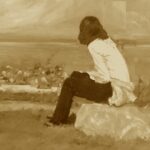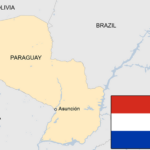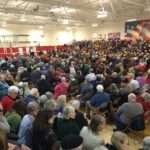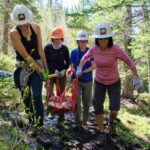When Ancestry.com said that most of my DNA was a match with the people of Scotland and Ireland, I was thrilled! These are countries I love very much. I love their folk music in particular – yes, even bagpipes. I’ve spent a few weeks in each place and, in particular, I have loved visiting the megalithic cairns and stone circles of the regions. I don’t think these neolithic stone structures are magical, but I do think they are amazing: ancient people trying to figure out the timing of the seasons, trying to predict the weather and, perhaps, harness the power of nature and the stars. I thought, wow, the next time I see those stone circles in Kilmartin, I’m going to relish that my ancestors were involved in building them!
Welp, not so fast. Not only because DNA tests are wildly misinterpreted and inaccurate with regards to what we think they are telling us (more on that later), but also because the people I’m descended from did not build those cairns and stone circles.
It was brown-eyed, brown-haired people with faces that are similar to those in Italy or Tunisia or the Middle East that built the stone monuments you see in Irish tourism ads. The genetic profile of these early Irish settlers indisputably originates in the Middle East. Their closest modern relatives — genetically — are the inhabitants of the Italian island of Sardinia. Nearly all of their tools and implements were made from natural products like stone and wood. They were farmers and they were lactose intolerant – they could not drink milk into adulthood without a lot of indigestive discomfort.
However, their DNA is almost entirely absent from the population of modern Ireland and Scotland – this absence indicates that at some point, these people, these stone circle builders, lost out to a new and very different population. In fact, they disappeared from most of Europe, except for Sardinia. For some reason, the descendants of those early Neolithic farmers were left undisturbed on Sardinia.
The DNA of the people that replaced these stone circle builders, the DNA held by the people we call Irish and Scottish today, appears to have originated in the steppes of what is now Ukraine and southern Russia. These newcomers had lactase persistence – they could drink milk into adulthood (as can I – looooove milk).
The genetic record indicates that the local population of stone circle builders was killed rather than that they integrated with the invaders – that may have been a result of war or a result of diseases brought by the newcomers for which the locals had no natural immunity. We may never know.
Here is the article from PRI that explains more. And here is a BBC article that explains it as well.
I still love those cairns and stone circles of Scotland, Ireland, Northern France and parts of England. I wanted so much to be descended from the creators of those. But I’m not – and neither are most of the people of Scotland and Ireland now.
And that brings me to another point: DNA tests. They are a lot of fun, they are based on science, but they are also subject to human interpretation, and I’ve been just as guilty of misinterpreting what they say as anyone. DNA tests do NOT tell you where your DNA comes from in the past – the tests tell you where on Earth your DNA is from TODAY.
My DNA results say my closest DNA matches are to the people of Ireland and Scotland NOW – not the people of Neolithic times that built those stone circles.
DNA testing companies chose a small number of people in a region to identify as their baseline genetic markers. That means that if there’s only a small number of, say, Central-Eastern African DNA samples that your DNA has been matched against, it’s less likely you’ll get a strong Central-Eastern African match, even if, in fact, you have ancestors from that region. That means that, in fact, you could be American Indian even if your DNA results don’t say so.
And with all that said… I wonder… What is heritage? What is my heritage? What isn’t my heritage? Is it only through being a direct descendant of a culture that I get to call that culture “mine”, or does that kind of ownership or affiliation come from being brought up in that culture?
I don’t know.
Other blogs on heritage, culture and who we think we are:
Ethnic, cultural, gender identity – good luck with your definitions













Leave a Reply